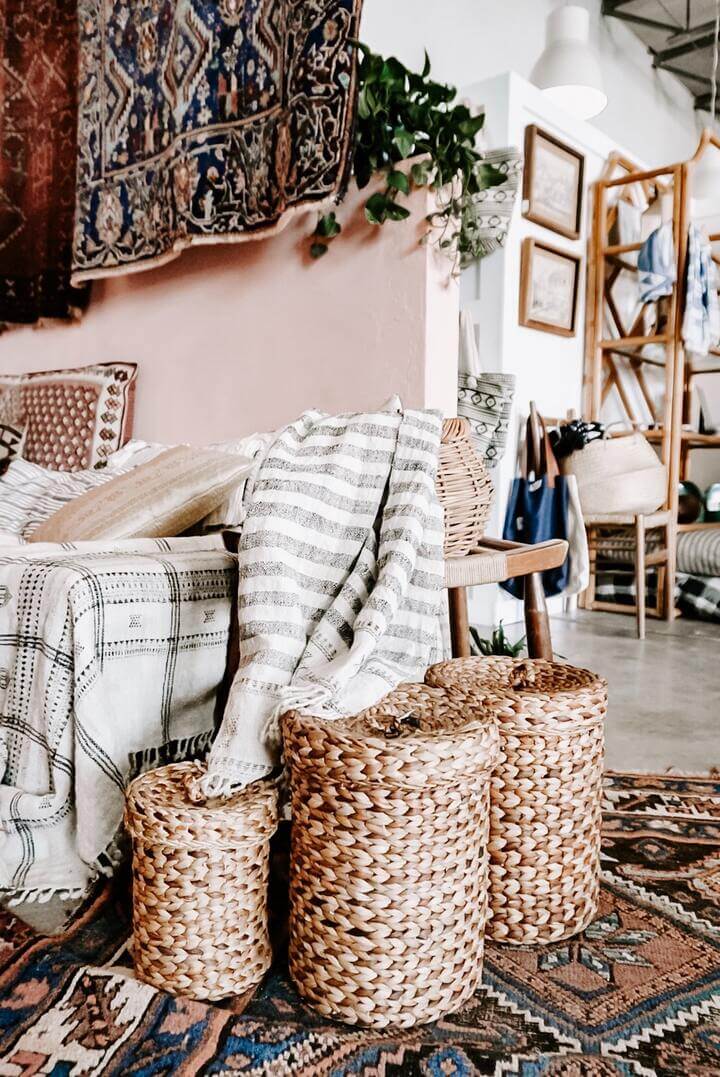Turkish rugs have a knotted, pile woven structure produced on hand looms, based on the weaving tradition that the Turks who migrated from Central Asia to Anatolia brought with them from their homeland. After Turks conquered Anatolia, rug development entered a new age. With Seljuks and Ottomans. Thus, very well known "Anatolian rug" emerged.
Origin of hand rugs can be traced back to ancient history. Today, it is thought to be a type of art originating from the living conditions of the nomads of the steppe culture, who lived in Central Asia. Plus it is also seen that the Turks, played an important, biggest role in the production and spread of rugs.
Today, to oldest-know hand rug is “Pazirik Rug”. İt is dated to the 3rd century B.C., so it’s very old. It is a Turkish rug originating from the steppe region and was attributed to the Huns.
Notably, the Pazirik Rug boasts an exceptional level of craftsmanship, featuring an impressive 36,000 Gordes knots within a mere 10 square centimeters - a feat that has yet to be surpassed in later periods.
The Origins of Turkish Rug-Making: A Brief History
As mentioned, the origins of hand rugs can be traced back to Central Asian ancient times. However, its developed over time and developing even know with the new ideas and trends. With the Seljuk Turks spreading from Iran to Mesopotamia and Syria in the centuries, Turkish rugs spread to the west.
Although rug centers and highly praised Seljuk rugs are frequently mentioned in ancient sources, there are no examples of Turkish rugs found to have survived from the Great Seljuk period. This situation is explained by the disappearance of rugs and textile products of the Great Seljuks during the Mongol invasion.
But rug depictions seen in the miniatures of the 12th-14th century. It is thought to be the original rug samples of the 19th century and today it is considered as the most important source for recognizing Seljuk rugs. The depictions in question indicate that rug weaving was a very important branch of art in the Seljuks.
It reveals that there is an established and developed knotted rug tradition and that Seljuk rug art is a solid foundation for later rug art with continuous developments. Some of the miniatures of the 13th century poet Hariri's Makamat (Meetings) in the Istanbul Süleymaniye Library and in the Bibliotheqe Nationale Museum in Paris are important examples of Seljuk rugs.
The Role of Turkish Rugs in Traditional Ottoman Culture
Rug making continued its importance in Anatolia during the period of the Principalities that came after the Anatolian Seljuks. Rugs produced in this period are called "Principals Period Rugs" or "14th-15th Century Anatolian Turkish Rugs ".
They are also known as "Anatolian Rugs with Animal Figures" because they are usually decorated with animal figures. Famous examples are the "rooster rug" in the Konya Ethnography Museum, the "Marby Rug" found in the church in Marby Village, Sweden, and the "Ming Rug" found in a church in Central Italy.
In this period, Anatolian rugs began to appear in the paintings of European painters as well as in eastern miniatures. In the 14th and 15th centuries, European painters frequently depicted animal figured rugs in their paintings. During the 14th and 15th centuries during the Ottoman period, the principles of Seljuk rug art were followed in terms of technique and motif. Examples of early Ottoman rugs were frequently depicted in the paintings of European painters. Turkish rugs, which were first seen in the paintings of Italian painters starting from 1451, date back to the 16th century. It was depicted in the paintings of Dutch and German painters until the very end.
During the 16th century, Turkish rugs experienced a period of great flourishing and prosperity. Numerous rugs were woven to cater to the demands of mosques and palaces, showcasing influences from the Ottoman architectural style in their intricate designs.
Artisans within the Ottoman palace wove rugs known as palace rugs, which differ from Anatolian rugs in that they utilize the Iranian knot, known as "sine." Although the colors and patterns of palace rugs were largely influenced by Iranian styles, they gradually developed an Anatolian character over time.
During the golden age of Turkish rugs, rugs often featured naturalist patterns depicting popular Ottoman art themes of the time, such as tulips, hyacinths, carnations, and pomegranate flowers. The second type of rug woven in the classical Ottoman period is the Uşak rugs.
How Turkish Rugs Have Evolved Over Time: From Tribal to Contemporary Designs
Turkish rugs have shown a great development from Central Asia to Anatolia. Throughout history, Turks have traded with the cultures they have met, and as a result, the rug culture has also been affected. Today, Turkish rug weaving is carried on by hand-woven methods.

